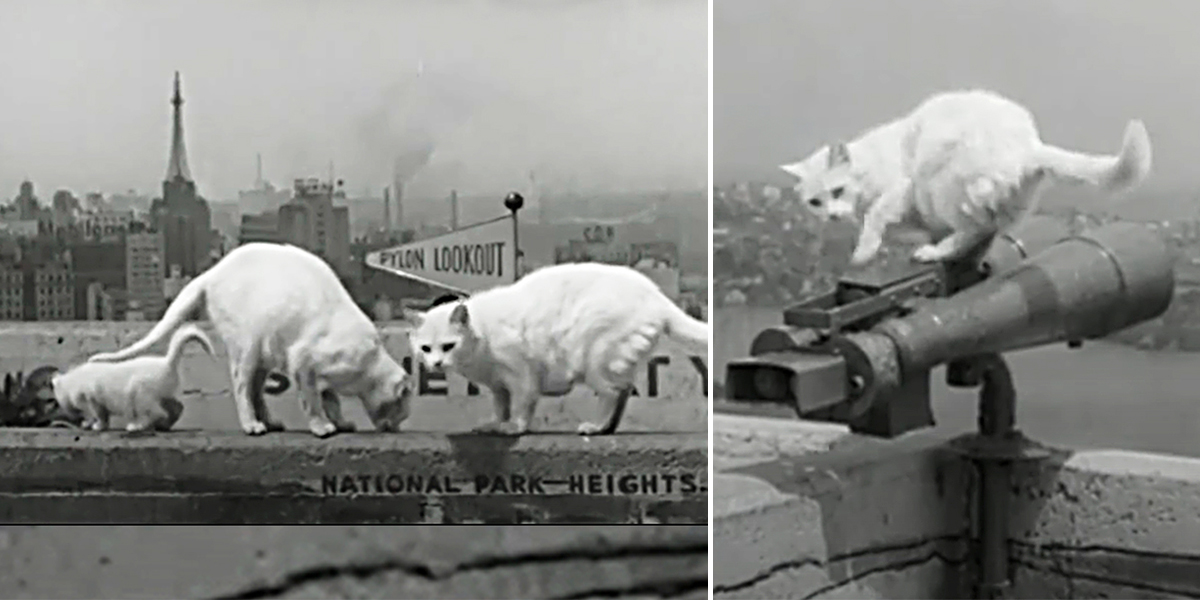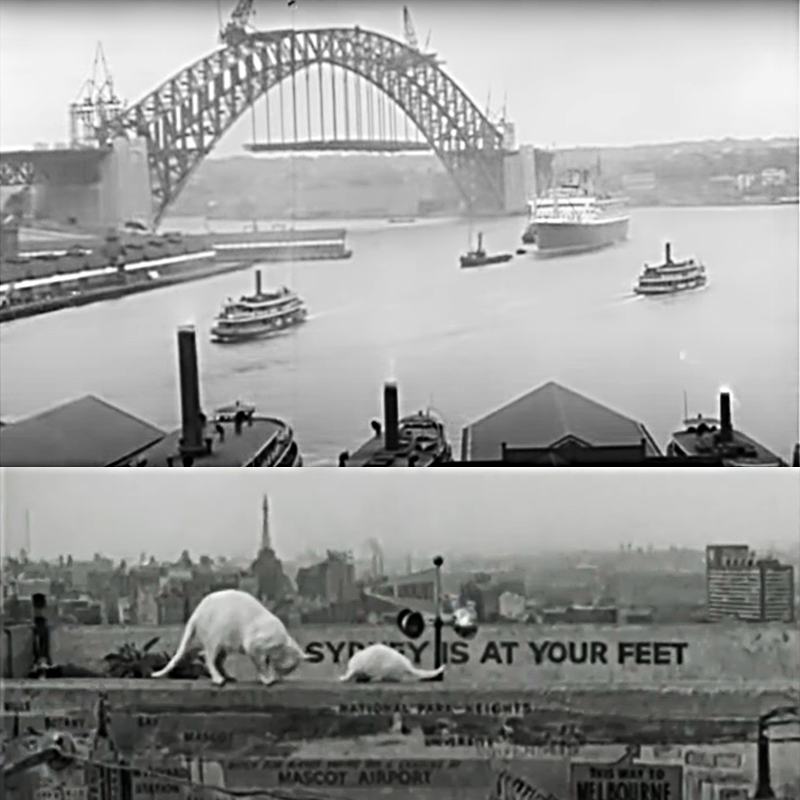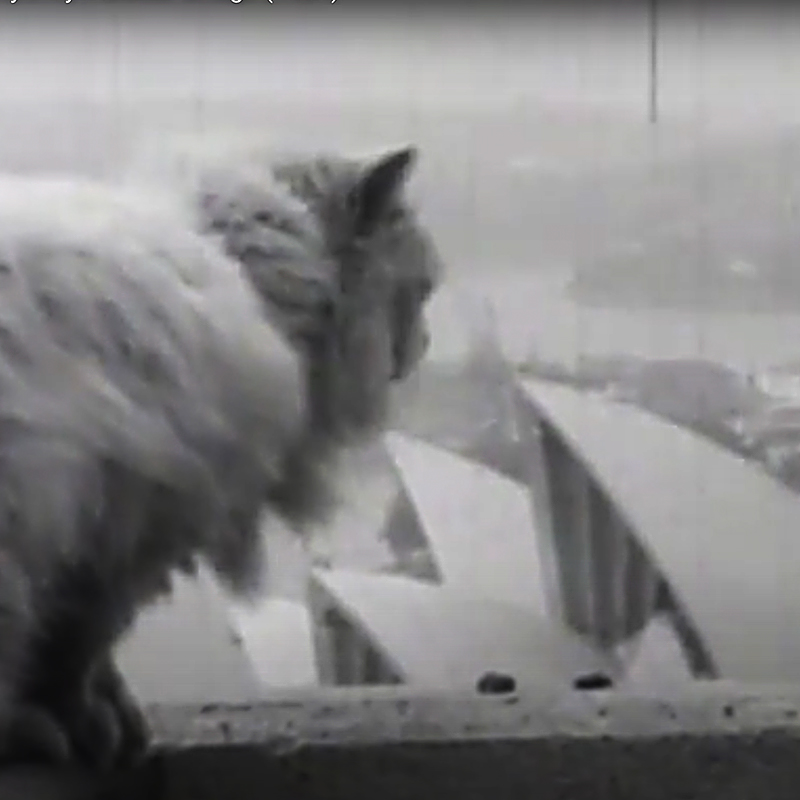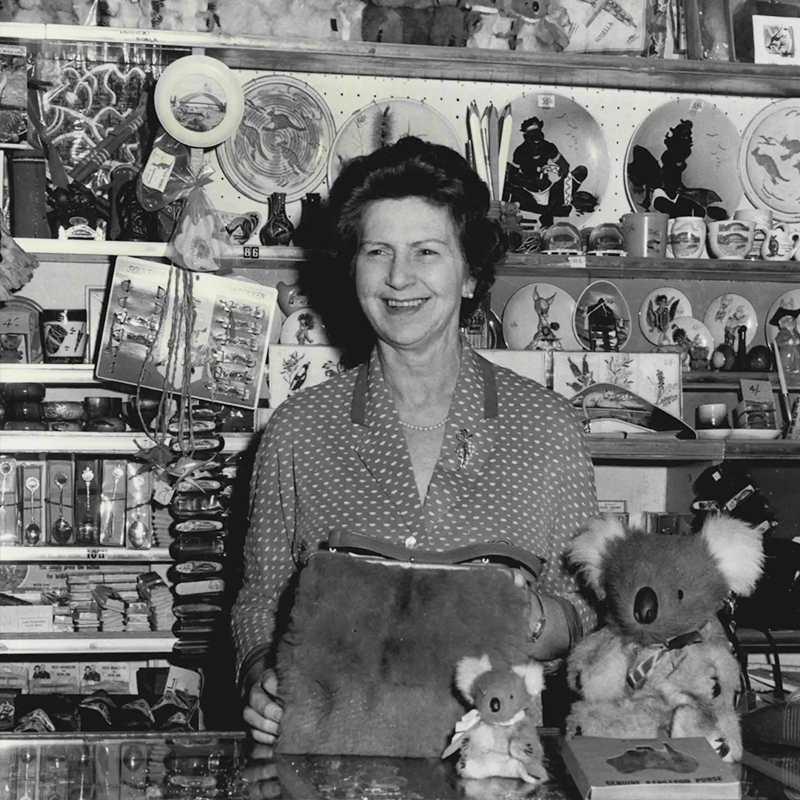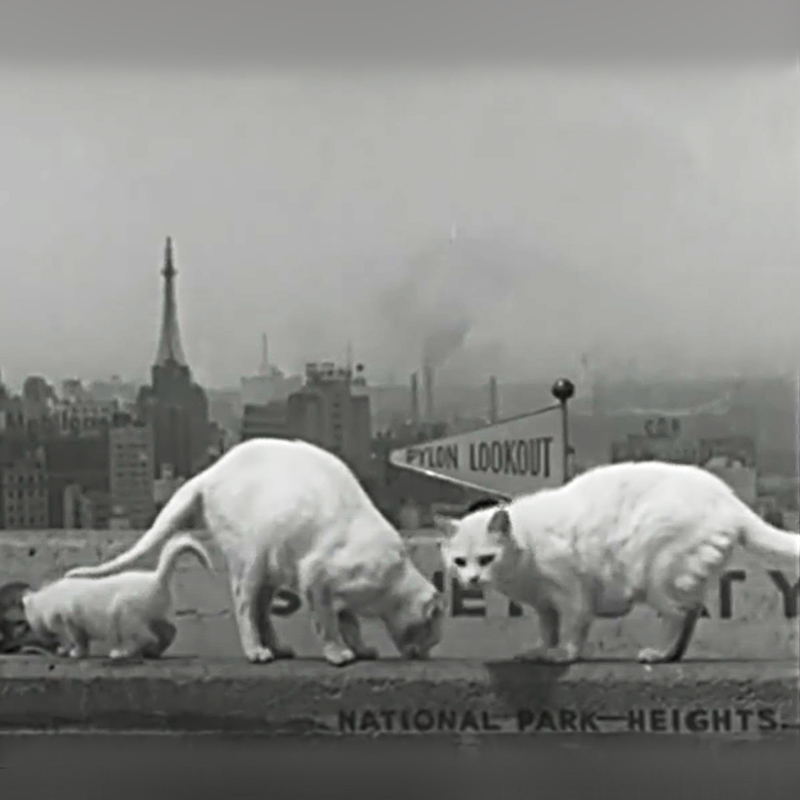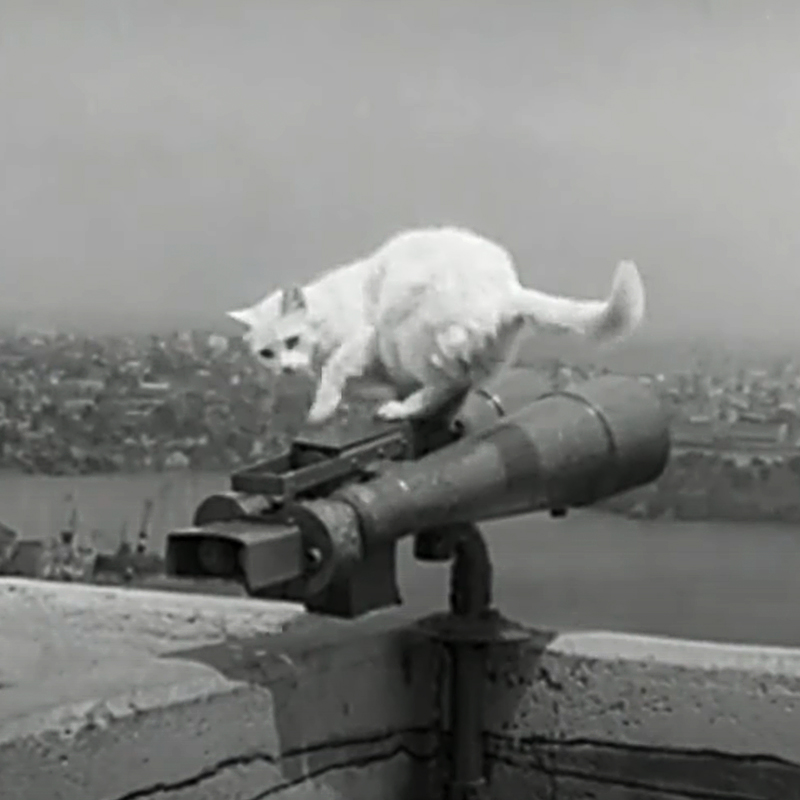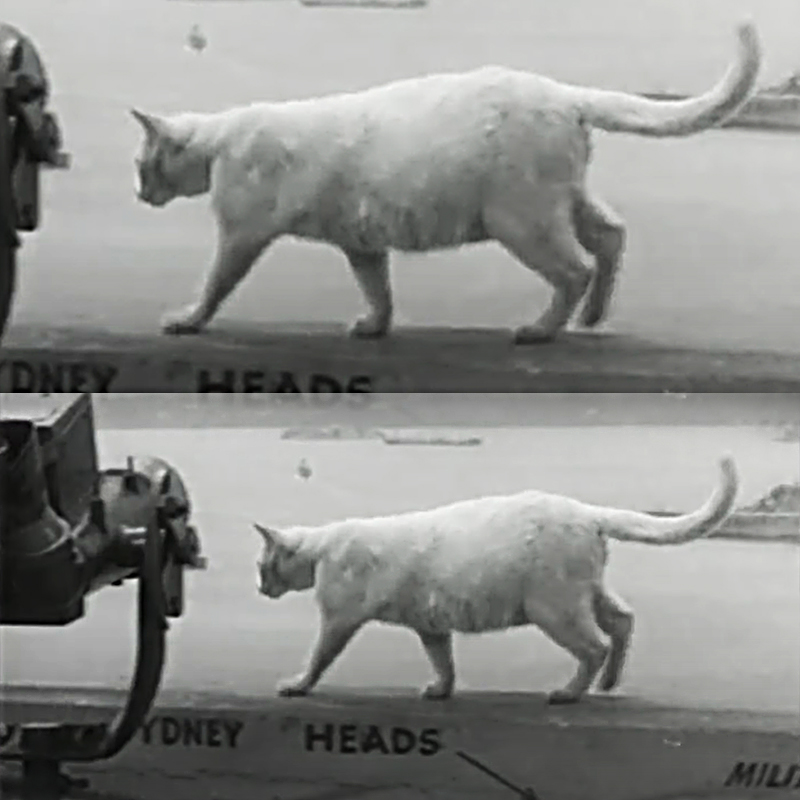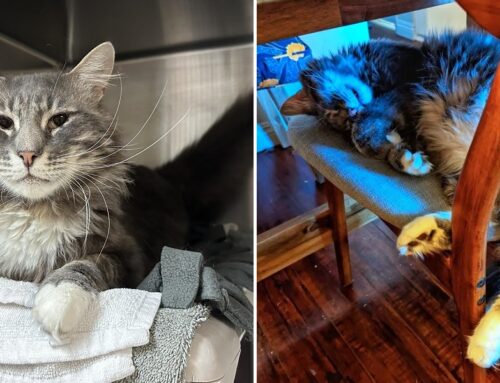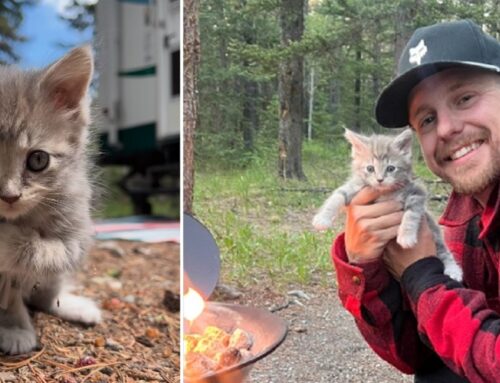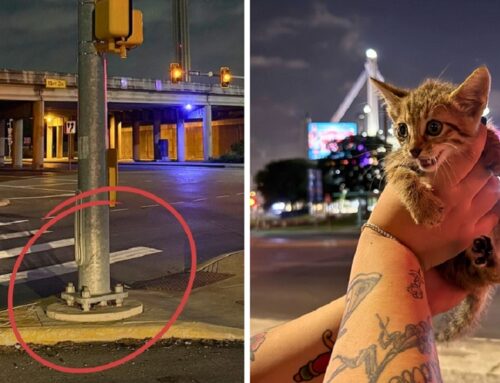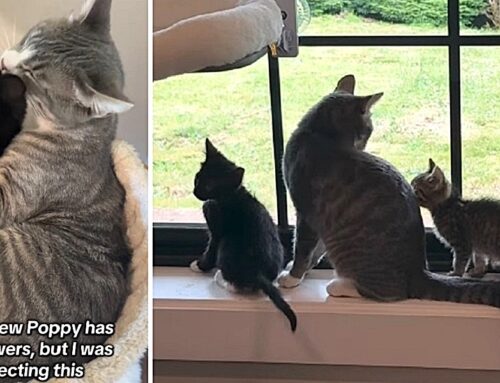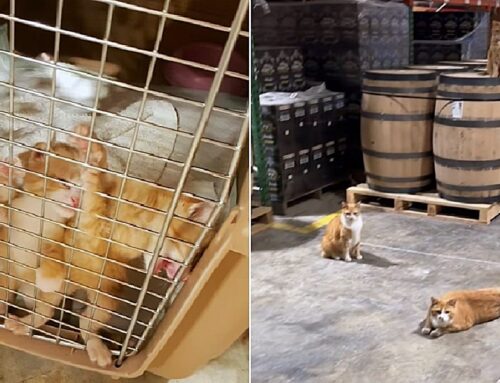Over two decades, white cats became one of the biggest draws to one of the biggest bridges in the world, the Sydney Harbour Bridge. As many as 60 cats became a tourist attraction at the bridge between the 1950s to 1971.
According to the New Castle Herald:
“During the 1950s, a small white cat became a worldwide phenomenon drawing tourist attention from all over the world. Known as ‘George,’ the white cat may even have been a bigger drawcard than the iconic Harbour Bridge on which he was said to live.”
Images via YouTube
George the White Cat
Of course, the Sydney Harbour Bridge is an iconic structure many associate with Australia, one of the world’s great landmarks. Recently, the bridge turned 90 on March 19, having opened to the public in 1932.
In the background of photos, you’ll often see the Sydney Opera House. However, people visited the bridge to see a white cat named George who made his home on the so-called “Coathanger” over the Sydney Harbour.
As many as 40,000 pedestrians could walk across the bridge at a time, and many became familiar with George and friends. In the news, reports described the cats as “a joy for the kiddies and a delight for adults.”
The Sydney Harbour Bridge As Ultimate Cat Tree?
Perhaps, the Sydney Harbour Bridge was the ultimate cat tree for George, who made the southeast pylon home. His majestic lookout, 300 feet in the air, was the pylon closest to the Opera House, which began construction in 1958, opening in 1973.
The castle-like pylon was one of four on each corner of the bridge. Each was largely ornamental since the structures didn’t hold the bridge’s weight, according to a 1954 article in The Daily Telegraph. Maybe, the structures were there to house the cats, some joked.
“Someone once suggested that they were built for the express purpose of housing the four white cats that live on top of one of them,” states the article.
The White Cats and Yvonne Rentoul
Fortunately for George and his pals, they had a human advocate named Yvonne Rentoul. Reporters described her as a “soft-spoken, vivacious brunette,” “brisk and vital,” and an energetic businesswoman. Her husband was Alexander (Lex) Rentoul. According to the Sydney Morning Herald, he managed the New Embassy ballroom in Melbourne in the 1930s. Previously, both served in WWII.
“Both served a role in the Second World War, with Lex climbing to the rank of Wing Commander in the RAAF and Yvonne posted to Townsville as Officer-in-Charge of WAAAF in early 1942,” wrote Valerie Lawson. “Discharged in December 1945, she joined Lex the following year when he was appointed the manager of Sydney’s Australia Hotel.”
According to Australian Geographic:
“These white cats could be seen roaming around the southeast pylon lookout – the one closest to the Sydney Opera House. Inside, they cozied up to their owner Yvonne Rentoul.”
“Yvonne Rentoul was an ex-servicewoman turned astute businesswoman who successfully convinced the Department of Main Roads (now the Roads and Maritime Services) to lease her the spot.”
Yvonne Rentoul in her shop on the pylon in 1964/J. Burke/Fairfax Archives
From Strange Beginnings to Early Cat Cafe
Rentoul thought it “outrageous” to let the space go to waste after a cafe and “fun parlor” moved out of the space in 1942 “to make room for an anti-aircraft gun and its crew.” The gun was mounted at the top during WWII but reportedly saw little use.
As for a fun parlor, the unusual details included an Aboriginal museum, a Japanese shrine, and a “pashometer,” run by former fairground barker, Archer Whitfield.
“For only threepence, visitors could measure their sex appeal and personality. It’s unlikely that anyone failed to meet the highest level of sex appeal, wrote the Herald.
From those bizarre beginnings came what seems to be one of the world’s first cat cafes, although not quite as we know them now.
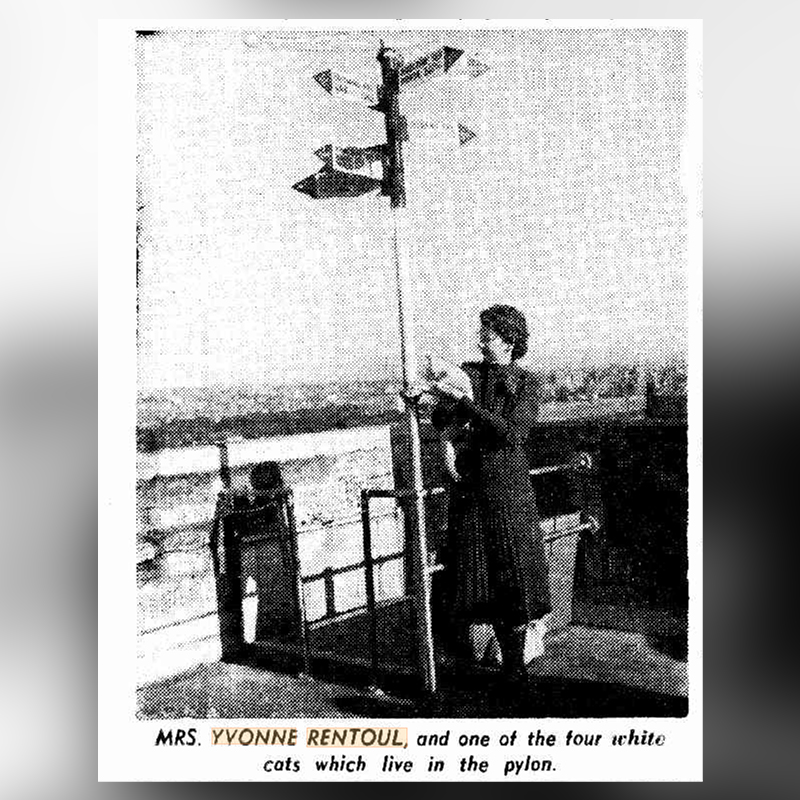
Yvonne Rentoul via Daily Telegraph/1954
Pylon Lookout Cattery and Garden
Originally, her vision was an “All Australian Exhibition” that could run in conjunction with a cafe.” Thus, it might loosely be one of the first cat cafes, opening in 1948. Along with the cats, Rentoul wanted a meaningful educational experience and offered quality souvenirs. Nevertheless, cats became the main attraction by the early 1950s.
After opening December 16, 1948, the “Pylon Lookout” became a favorite spot for tourists and cats alike.
As many as 600 people climbed the stairs to the top “penthouse” on weekends. During weekdays, about 150 climbed to see the view. That’s where Rentoul installed a cattery in the rooftop garden,” reported ABC Australia. (see video below)
Inside, they could see 3D dioramas, a stuffed wombat, and many other realistic and meticulous displays described as “a miniature slice of Australiana.”
Video from 1967 by ABC News (Australia):
Feline Keepers of a Wishing Well in the Sky
When tourists visited, they could have their pictures taken and visit with the cats, an memorable experience described like this:
“The four famous white cats, whose ‘immaculate garb and priestly aloofness’ (according to the guide book) ‘make them trustworthy keepers of the Wishing Well’s secrets’ are housed in a neat little ‘Cottage’ on top of the pylon.'”
World’s First Cattage?
Elsewhere the cottage was described as a “Cattage.” Was that one of the world’s first too? Besides the Wishing Well, the cats also had access to a fishpond. It seem these kitties had it all.
“Even in wet weather Bridget and Pylon never leave their lofty home. However, they do take refuge from the rain by sheltering under a fishpond on the top of the pylon,” read a story in the Sunday Herald.
In a tourism brochure from the 1960s (you can see it here), George and his other white cat buddies were the main attraction.
“WORLD FAMOUS WHITE CATS. A joy for the kiddies and a delight for adults. They are unique; they even have their own merry-go-round,” later reprinted in Australian Geographic.
George, Bridget, and Pylon
An earlier article from the Sunday Telegraph in 1951 described George and friends. At the time, twin cats named Bridget and Pylon were among his friends. At home in their lofty sanctuary, the cats loved being atop the penthouse, “trading on their legendary nine lives every day since Christmas,” according to a caption from The Sunday Herald.
“Since they took up residence on top of the pylon, one of the twins, Pylon, has never been downstairs. Bridget was once carried down but as soon as she was released she raced up again and has stayed there ever since.”
Before the days of TNR programs, kittens born in the pylon would go to “good homes in return for a donation to Legacy.”
Rentoul and the White Cats Move Away
In 1971, Mrs. Rentoul and the cats moved away after the lease became up for renewal. A later report indicated Yvonne was “hopping mad” and “heartbroken” after “her lookout” closed after 22 years of hard work.
However, we fondly remember the cats’ presence on the Sydney Harbour Bridge. Today, visitors can still climb the 200 steps to the top of the tower, but the white cats are a distant memory.
You can see the famous white cats on the Sydney Harbour Bridge from this vintage video from “The Winner Is Sydney”:
And here, you can see the cats were still an attraction on the bridge in 1969. By that time, the Sydney Opera House was visible.
Video by ABCLibrarySales:
Featured image: Screenshots via YouTube


